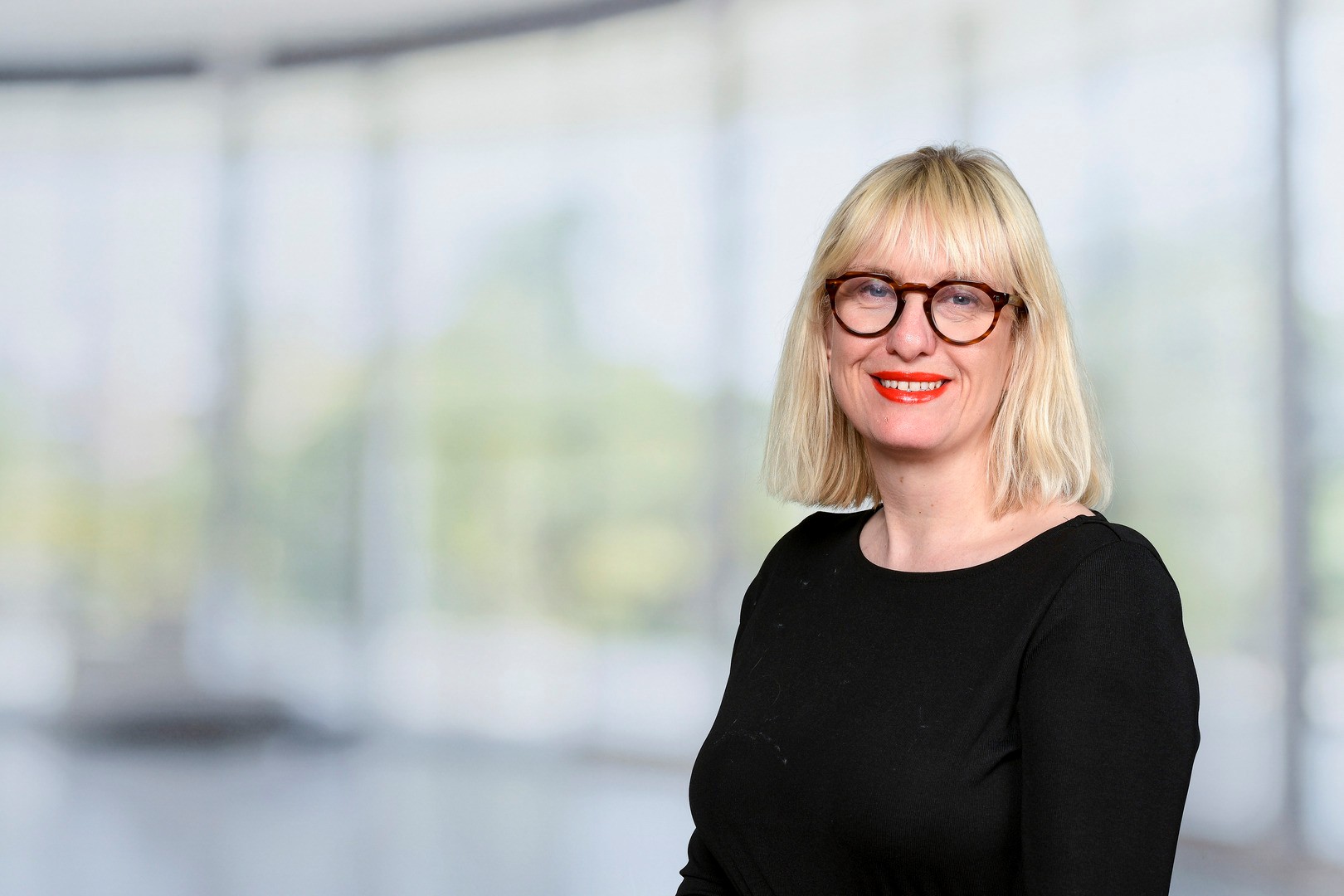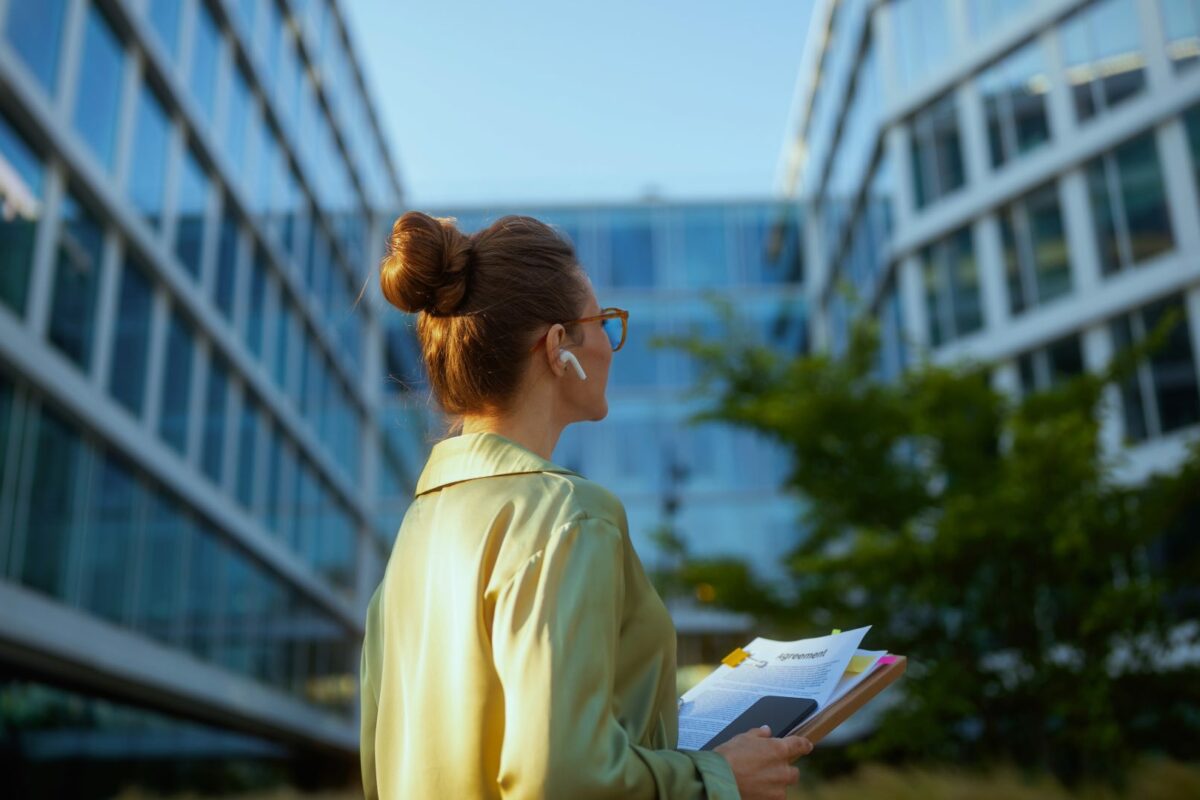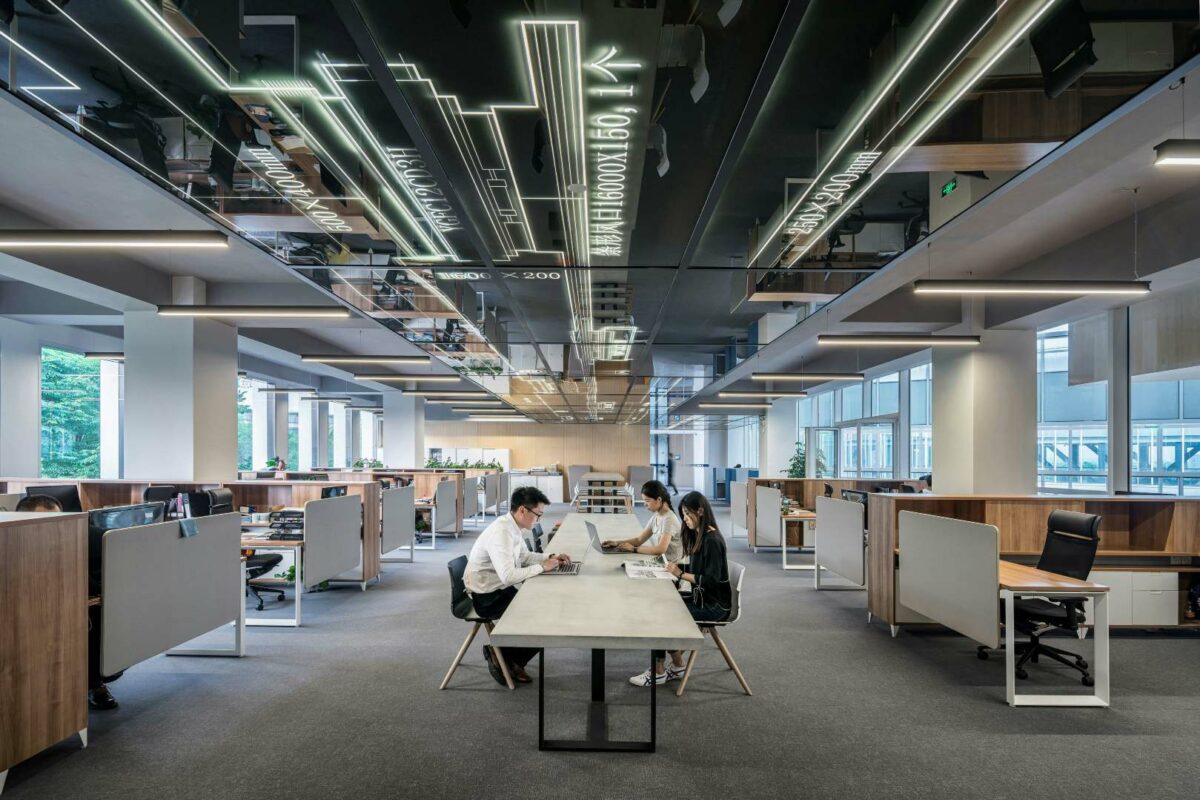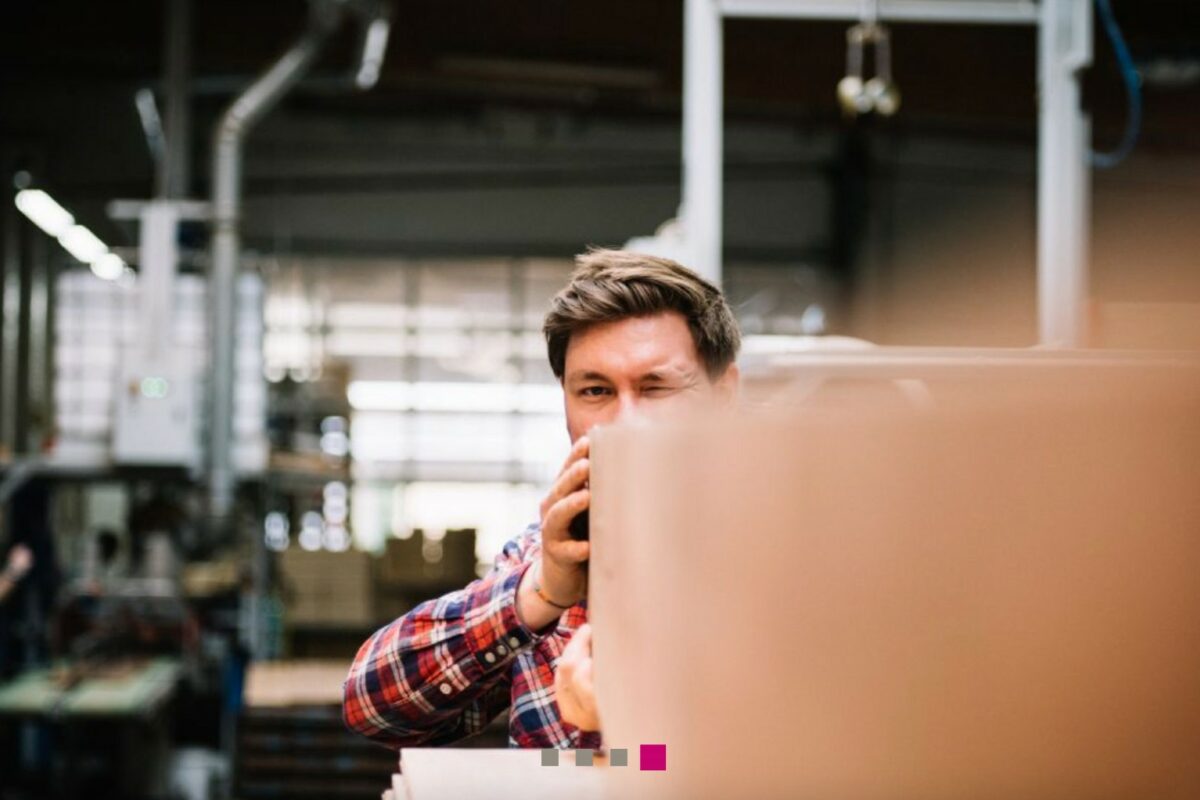Steve Jobs was a great believer that creativity comes from spontaneous meetings and random discussions. “You run into someone, you ask what they’re doing, you say ‘wow,’ and soon you’re cooking up all sorts of ideas – If a building doesn’t encourage [collaboration], you’ll lose a lot of innovation and the magic that’s sparked by serendipity.”
The importance of accidental collisions
Nothing is as effective as face-to-face communication in building relationships. According to a McKinsey Global Institute study, knowledge workers spend an average of 14% of their work week communicating and collaborating internally, with non-verbal cues having a greater impact on creating a positive impression. Creativity and collaboration can breathe new life into a company and empower all employees. The water cooler moment has been an integral part of office culture for a long time, replaced more recently by new design interventions such as in-house cafés, internal planting schemes and informal seating. These informal environments provide space for accidental collisions, recognised as an integral way of building working relationships. These types of discussions often result in an overall happier working environment, generating new ideas, expanding what it means to think creatively, and fostering stronger community and friendships between team members.
Virtual vs physical water cooler moments
But what happens when remote working interferes with these water cooler moments, as is evidenced now during lockdown? How can businesses strike the balance between remote working, casual collisions and serendipitous meetings? There is a temptation to think that collaboration and creativity can be developed over email and other forms of remote networking, with companies trying to replicate this via a countless number of work-related platforms like Zoom and Microsoft teams.
As employees become more independent and the culture of remote working is normalised even further, there are more and more online tools that allow teams to work together without being physically present together in the workplace. However, recent research conducted by IBM found that companies are struggling to effectively connect their workforce virtually.
Bethan Harris Director at Collectively.org, writing for the Loneliness Lab on home working reinforces this difficulty: “Virtual meetings can be really different to face-to face meetings. In person, there’s the inevitable chitchat as you walk to the meeting room, make a cup of tea, faff about with the whiteboard, all of this time you’re usually talking about things that have little to do with the agenda.” The latest tech advances might help your organisation with certain tasks, but is it going to help your staff foster stronger working relationships? Will it create an environment where creativity and collaboration can flourish naturally? The digital age has enabled people of all ages to work remotely more than ever before and COVID-19 has created the biggest home working experiment of our time. However, the latest figures from Spaces show that even younger generations, who have grown up with technology being the norm, crave personal and face-to-face communication.
The rising importance of the office
With so many studies showing how engaged and productive the average remote worker is, it would be remiss of businesses and organisations to not allow employees to continue to work flexibly. However, when we’re forced to be apart from each other, physically isolated, it is clear that we need a balance between the virtual and physical worlds. There is no doubt, that we crave the physicality of working together and that the virtual world cannot replace our need to be physically present with our colleagues. Now denied to us, the idea of the office and the role it plays in our lives is now more important than ever. Some businesses may be considering that they no longer need the space but we would urge caution.
Although we all like to put those light bulb moments and meetings of minds down to serendipity, many forward-thinking companies are now working towards creating more intentional physical opportunities for social collisions by rethinking their office design. We Work design space precisely to encourage these accidental collisions, and Google’s Silicon Valley campus is designed to maximise chance encounters. Facebook plans to put several thousand of its staff in a single, mile long room, and Yahoo turned its back on mobile working in the belief that the best insights come from accidental collisions in the hallway or other shared spaces. While the idea of a mile long room may be horrific to some, as we enter a new phase of working, physically isolated from our colleagues, it is clear we need adaptable, creative physical environments that can engineer accidental collisions.
It is also obvious that it is more difficult to create these spaces online, with visual meetings and WhatsApp groups not fulfilling our requirements to really see each other in person. We need spaces that we can enjoy being with our colleagues, that are appealing to a dynamic and forward-thinking workforce, but also need to acknowledge how our needs have dramatically changed in the recent weeks.
According to Lucy Abbott, Director of design company Create:
“The challenge will be to adapt our workspaces and working practices to strike a balance between face-to-face time and remote working, so we get the best out of both modes of working. Going back to the default of commuting and the 9 to 5 in offices won’t be an option for many; so we need to make face-to-face working safe and comfortable by investing in larger spaces for meetings and ensuring air quality is enhanced.”
Adaptable spaces that can fulfil each worker’s requirements. With sensitive design and working practises perhaps we can finally have it all?
For more content from Clare Bailey, click here.
Clare Bailey is a Director in Savills Commercial Research team and has written extensively on themes within the regional office markets. Clare contributed to Savills new office magazine ‘Core’ highlighting the importance of a ‘diverse’ workforce, as well as writing articles on themes such as wellness and flexible working. Clare presents at a number of industry events including Savills regional ‘Cross sector’ seminars.

Content Team
Work in Mind is a content platform designed to give a voice to thinkers, businesses, journalists and regulatory bodies in the field of healthy buildings.




